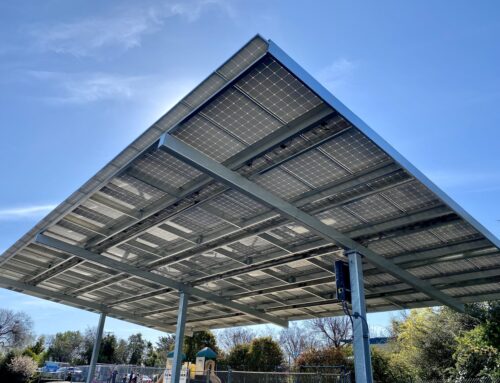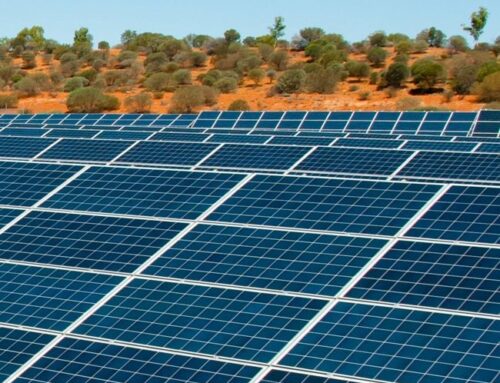Southeast Asia doesn’t need fossil fuels to power its data center boom. Renewable energy w
April 24, 2025
The server that powers your AI application has a good chance of being based in Southeast Asia. The rise of AI has led to a simultaneous boom in data centers in markets like Malaysia, Singapore and the Philippines.
Even if projections of massive growth in data centers end up being too bullish, AI isn’t going away. Over time, demand for energy from AI applications will only grow. The International Energy Agency already projects that India and Southeast Asia will have the biggest increase in energy demand through to 2035.
Even DeepSeek, which showed that AI can be done efficiently and affordably, could boost demand for computing power across Southeast Asia, as local companies and consumers can now join the generative AI revolution at lower cost.
Planners may think that fossil fuels—traditionally the quick and dirty option to get a lot of power quickly—is the only way to get the energy needed to power the AI boom. They’d be seriously mistaken.
Renewable energy will meet increased demand without exposure to the volatile cost of imported fossil fuels—and making the push towards net zero more challenging than it already is. Indeed, the region’s success in adopting AI will be closely linked to growth in renewable energy capacity over the years ahead.
Even before ChatGPT, the IEA estimated that data centres were consuming 1% to 1.5% of global electricity. That share is surging thanks to AI.
Asking generative AI a question requires up to five times more power than a traditional web search, while applications use nearly 33 times more energy than their conventional counterparts.
Southeast Asia has around three times less data center capacity per capita than markets like the U.S., Japan and Korea, according to Maybank estimates. Tech giants are racing to fill this gap, with hyperscalers like Amazon, Google and Microsoft promising at least $38 billion of investment in the region last year. Alibaba, which plans to invest at least $53 billion in AI and cloud computing over the next three years, is working with local partners in markets like Indonesia and Thailand.
Renewable energy can help maximize the return on investments from building out digital infrastructure. About three-quarters of Southeast Asia’s energy comes from fossil fuels, but these are now becoming the more expensive option. Analysis from Wood Mackenzie shows that the cost of renewable energy in Asia-Pacific was 13% cheaper than conventional coal in 2023 and set to be 32% cheaper by 2030. Utility-scale solar energy was already the least expensive source of energy in 11 out of the 15 economies covered.
Renewable energy will only get cheaper as prices for photovoltaic panel and wind turbines continue to fall. For economies that want to succeed in AI era, doubling down on energy from the sun, wind and sea is the natural choice.
Data centres need a constant and reliable power supply. Previously, that could only have come from, say, a coal or hydro plant. But now, a solar farm can provide more than 90% of what a data center needs, up from 20% in the past.
My home base of the Philippines, for example, has some distinct advantages in delivering renewable energy, such as access to stable geothermal and hydro power and an open energy market. Our country hopes to leverage these strengths to generate at least 35% of its power from renewable energy by 2035, and 50% by 2040.
Investments are being scaled up. My own company, Citicore, hopes to energize the first gigawatt towards a 5GW target over five years. Another project, the Meralco Terra Solar Project, claims to being the world’s largest solar and battery storage facility.
Vietnam and Thailand also recently announced programs to pilot direct power purchase agreement (PPA) regimes for renewable energy. In Malaysia, utility company Tenaga Nasional Berhad is bringing 60 megawatts (MW) of solar into the grid through a PPA. Indonesia is considering a policy change that will allow consumers to buy power directly from renewable producers through state-owned transmission lines.
AI-ready data centers are already being developed with sustainability in mind. Singapore’s Evolution Data Centres (EDC), for example, focus on powering facilities with renewable energy. These centers also make sustainability, independently verified by third parties, a key pillar of construction. (Disclosure: Citicore has agreed to provide 100MW of renewable energy to EDC).
Even before AI went mainstream, Southeast Asia was embracing renewable energy. Although the region produces plenty of coal, it spends some $130 billion a year on oil imports. The group of economies that the Asian Development Bank refers to as emerging Asia—which includes China and India—provided $600 billion of public financial support for fossil fuels in 2022.
With energy demand in the Association of South East Asian Nations (ASEAN) expected to double by 2040, relying on fossil fuels will unnecessarily strain public finances.
AI could potentially provide a $1 trillion boost to the ASEAN economy. The good news is that we won’t need to rely on expensive, carbon-emitting fossil fuels to capture that. Renewable energy is cheap, abundant and connected to the grid; it’s up to policymakers, investors, and importantly developers to put that energy capacity to work.
The opinions expressed in Fortune.com commentary pieces are solely the views of their authors and do not necessarily reflect the opinions and beliefs of Fortune.
This story was originally featured on Fortune.com
Terms and Privacy Policy
Search
RECENT PRESS RELEASES
Related Post



